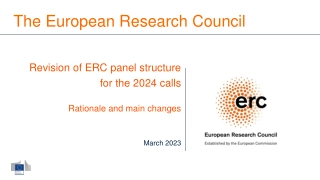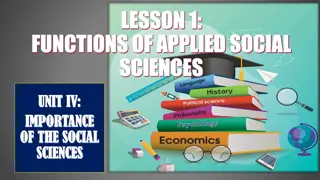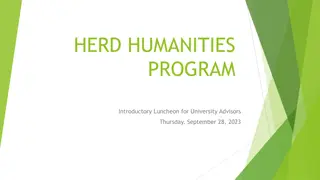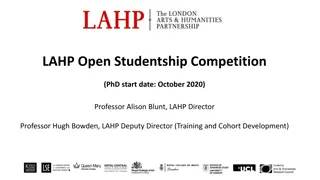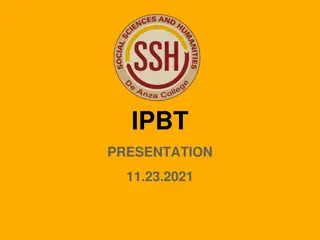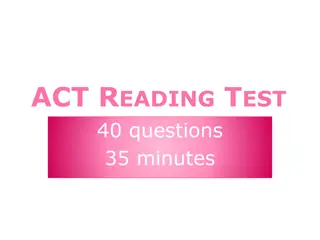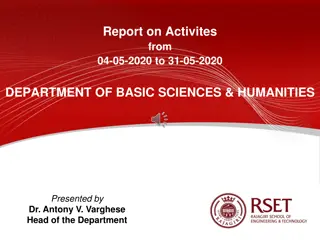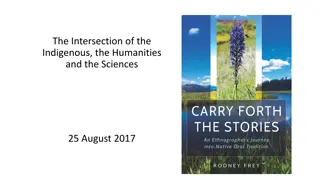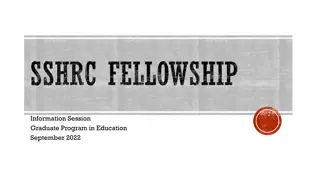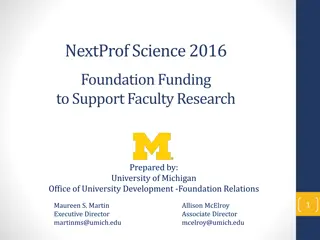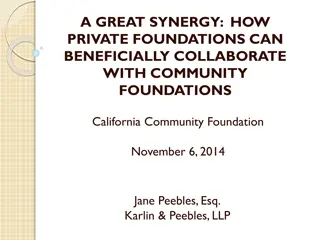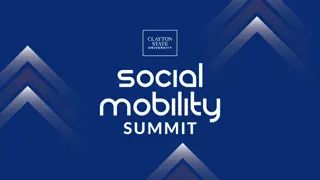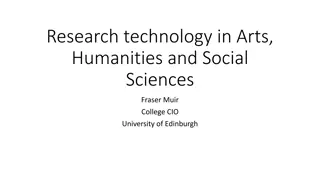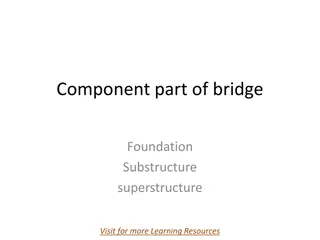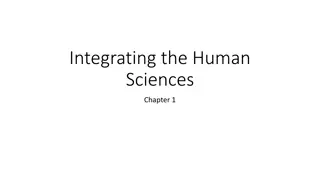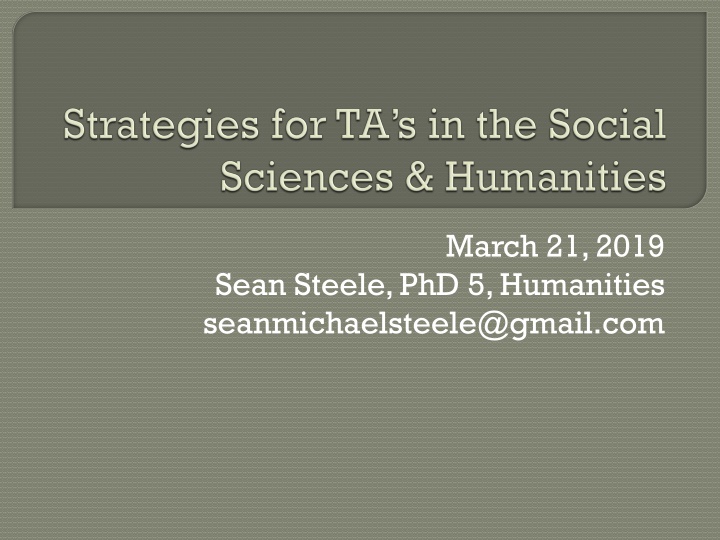
Effective Strategies for Teaching and Learning
Explore impactful teaching methodologies including the BOPPPS Model, self-reflection strategies, and examining qualities that differentiate good and bad professors.
Uploaded on | 0 Views
Download Presentation

Please find below an Image/Link to download the presentation.
The content on the website is provided AS IS for your information and personal use only. It may not be sold, licensed, or shared on other websites without obtaining consent from the author. If you encounter any issues during the download, it is possible that the publisher has removed the file from their server.
You are allowed to download the files provided on this website for personal or commercial use, subject to the condition that they are used lawfully. All files are the property of their respective owners.
The content on the website is provided AS IS for your information and personal use only. It may not be sold, licensed, or shared on other websites without obtaining consent from the author.
E N D
Presentation Transcript
March 21, 2019 Sean Steele, PhD 5, Humanities seanmichaelsteele@gmail.com
1) Student Experience Activity 2) BOPPPS Model 3) Brainstorm Activity 4) Self-Reflection Strategies 5) Your Teaching Philosophy
Think back to your experiences as an undergrad. In your opinion, who were the best professors and TAs? Who were the worst professors or TAs? What qualities made the good teachers and classes good? What qualities made the bad ones bad?
Get together with a partner to draw on your experiences to answer the following questions: 1) What words describe the good classes and teachers? 2) What words describe the bad classes and teachers? 3) What qualities do you value most in a classroom? How would you condense these into a list of words?
A model that can be used to organize you tutorials to ensure good teaching Provides students with a consistent approach to every tutorial Source for BOPPPS description: http://www.queensu.ca/teachingandlearning/modules/active/ 18_boppps_model_for_lesson_planning.html
Consists of: 1) Bridge-In 2) Learning Outcome 3)Pre-Assessment 4)Participatory Learning 5)Post-Assessment 6)Summary
The TA Gains learner attention Builds Motivation Establishes relevance Learners find out What s in it for me? Why does this matter? Why should I learn this?
Ideas for Bridging Introduce the topic with a video clip or a song or something relevant from the news. Tell a relevant story from your own experience. What else could work as a bridge-in?
The TA Clarifies what the learner will get out of the lesson. Streamlines the planning process to focus on the outcomes; this often includes use of active verbs. Learners find out What is expected of me?
TAs find out. What do learners already know? Do I need to adjust the depth and pace of learning? Which students could act as a resource? Learners Recall prior knowledge to reinforce. Gain confidence by reviewing prior knowledge. Assess their own strengths and areas of improvement.
Ideas for Pre-Assessment A survey, quiz or poll. A simple show of hands. A quick discussion based on key questions. What else could you do?
TA Plans an activity that allows students to engage with learning outcomes. Communicates expectations clearly. Provides appropriate time for activities to keep students engaged. Learners Are actively involved in achieving the outcomes of the lesson. Improve understanding and deepen learning. Use each other as a resource.
Ideas for Participatory Learning Pose a question and ask learners to Think-Pair- Share. Divide course material into sections for small group summaries, then gather as a class and have students teach each other. What others ?
TA finds out What did the learners learn? Were the desired outcomes accomplished? Are there any gaps in understanding? Learners find out Am I getting it? What do I need to work on?
Ideas for Post-Assessment Ask learners to submit a 1-minute paper in response to questions, such as: What was the most important/interesting thing you learned today? What questions remained unanswered?
TA Concludes and wraps up learning experience. Provides a sense of closure and completion. Sets up for future lessons or reinforces past lessons to establish connections with the broader course. Learner Appreciate how the lesson ties in with the course. Reflect on what outcomes were met. Review material immediately.
Ideas for Summarizing Recap main points Play a clip showing application of concepts in the real world. What else?
Blooms Taxonomy of Learning is another way to highlight the importance of active and/or participatory learning This is the most important component of the BOPPPS model
Remember that the BOPPPS Model is just a model The order can be shifted around depending on your topic For example, you might start with a pre- assessment, then bridge to the learning outcome
Drawing on the first activity and ideas within the BOPPPS model, get in pairs to discuss activities you have tried or would like to try in your tutorial This can include relating what worked and what did not work Then, write down your top five activities Then, we will come together as a group and share
START STOP CONTINUE The 1-minute essay Teaching Commons Assessment Forms What else?
A way to bring together all we have been discussing today Self-reflection is a step toward developing a teaching philosophy But what is a teaching philosophy?
Return to the words you wrote down describing good teaching. Are these the most important qualities in your idea of good teaching? What other words, concepts, phrases or ideas could you add?
This is a starting place for formulating your teaching philosophy statement A first-person, 1-2 page reflective piece outlining your approach to teaching and learning
A teaching philosophy statement should include: Your definition of good teaching A discussion of your teaching methods A discussion of your evaluation and assessment methods A description of your teaching goals
Questions to think about: 1)How do you implement your definition of good teaching? 2) With what content, skills, or values should students leave your classroom? 3)What are your goals for improving your own teaching? Source for the last two slides: https://teaching.uwo.ca/awardsdossiers/teachingphilosophy.ht ml
Questions to think about: 1)How do you implement your definition of good teaching? 2) With what content, skills, or values should students leave your classroom? 3)What are your goals for improving your own teaching?
Lets end with a discussion: 1)What is the relationship between a TA and a Course Director? 2)What problems have you encountered with this relationship? What did you do? 3)What is the relationship between a TA and an undergrad? Why are there TA s?

